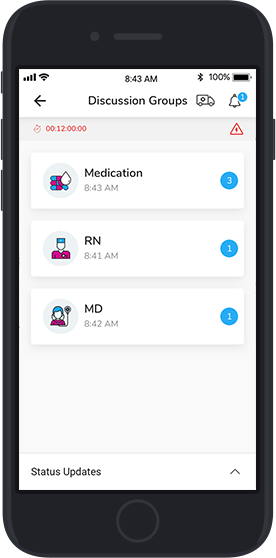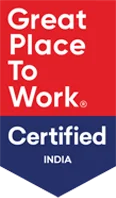Success Story
Daffodil helps one of the largest hospitals in New York to reduce door-to-balloon time for STEMI patients through an emergency response app
Services Used:
The client is one of the leading hospitals in New York. It has over 39 multidisciplinary research, education, and clinical institutes, with over 7,000 physicians including general practitioners and specialists. The hospital has over 150,000 inpatient admissions and 500,000 emergency department visits on a monthly basis.
- 47% reduction in door-to-balloon time
- 50% reduction in app development time
- 1000+ STEMI patients monitored
The Situation
Guidelines recommend that the interval between occurrence of the stroke and intracoronary balloon inflation (door-to-balloon (D2B) time) should be 90 minutes or less. The medical treatment for stroke, STEMI, and trauma are generally delayed due to the communication gap between the paramedics and doctors during the door-to-needle time.
Similarly, at the client’s end, the entire process of managing patients- i.e. transferring them from the field/emergency and tracking their health or medication status was done through telecommunications. The first respondents, i.e. the paramedics required to regularly keep the cardiology team informed about the situation of the patient, which often led to delay in information transit. Thus, the client wanted a solution that could provide a real-time interface and status updates to the stakeholders so that they could coordinate and communicate with each other during door-to-balloon time.
Hence, the client was on the lookout for a technology partner who had an in-depth experience in developing software for the healthcare industry. The client chose Daffodil Software as we brought on the table our years of experience in the healthcare industry, hands-on knowledge of medical operations and expertise in developing breakthrough medical applications. On the development front, the requirement was to:
- Develop an integrated mobile based solution for direct transmission of ECG data as well as all other healthcare information of the patient from paramedics in the field to the cardiology team in the hospital
- Develop an integrated messaging functionality that provides stakeholders with real time information of the patient while the ambulance is in transit, so that the team is better prepared when the patient arrives .
- Incorporate a ambulance tracking functionality in the application so that all stakeholders can track the patient and ensure preparedness for medical emergency
- Make the application compliant to HL7 standard. HL7 refers to a set of international standards for transfer of clinical and administrative data between software applications used by various healthcare providers.
The Solution
Our business analytics and software architects outlined the optimal architecture of the mobile solution, refined the functional requirements and developed a complete product vision and its development roadmap. Once the strategic plans were mutually finalized, Daffodil’s team mapped the requirements onto the technology landscape. Daffodil’s UI experts applied design thinking techniques and role based user stories in order to build an easy to use user interface for the application. One of the cornerstones of the project was delivery time of the application.
Hence, Daffodil applied a low-code development approach for developing the application that resulted in reduction of overall development time by 2X. The application, which was estimated to take 3.5 months with a conventional approach was developed in just 1.5 month
Daffodil software developed mobile apps for Android and iOS platform that helps to improve clinical outcomes in patients with STEMI and cardiogenic shock. The app offers an interface that allows doctors, nurses, and health assistants to communicate with each other as soon as a STEMI case is registered.

Once the medical personnel activates the application when a STEMI is identified, an image is taken of the electrocardiogram (ECG) and, along with the patient details, transmitted to all pertinent members of the STEMI care team (Emergency Medical Services [EMS], ED, catheterization laboratory personnel, cardiologist on call, etc. These members are immediately alerted by the application and have immediate access to the ECG and relevant patient information in real time.
Depending upon the responsibility that a member in the system holds, different user roles were defined in the app such as:
- Alarm Initiator (Referrer): This user is situated outside the hospital, can practically be a doctor, nurse or health assistant, who will raise a transfer request. The referrer here will send ECG images and details about the patient to the MD in the hospital and transfer center.
- The Team at the Hospital (Acceptor): This user is the cardio specialist at the hospital. Depending upon details shared by the referrer team, the acceptor team checks the case of STEMI and updates status to the transfer center.
- Transfer Center: This user at the transfer center is responsible for associating Ambulance (EMS) with a case and its management.
- EMS: This user is associated with the ambulance and is responsible to pick and drop patients to the hospital and can actively participate in group chat. The group chat members can also track the EMS live while it routes to pick the patient and is on its way to the hospital.

Daffodil also developed a fully customized and modular admin panel that was integrated with the EMS of the hospital. The admin manages all the users and monitors the ecosystem. Admin can activate/deactivate users, check alarms (and their status), analyze pre-procedural metrics, access the patient’s dashboard, and more. With all these user roles, the app enables everyone to collaborate and work simultaneously to take care of a patient. With live GPS tracking, the team at the hospital can stay prepared to treat the patient on time, thereby reducing any risk that a delay in treatment can do.

The Impact
The solution aims to streamline the treatment process by ensuring that the right, on-time treatment is given to the patient once they arrive at the hospital. The paramedics in the ambulance can directly share the patient outcomes with the cardiology team at the hospital, so that they are well prepared when the ambulance reaches the hospital. The application also tracks the healthcare provider’s performance compared to the standard benchmarks for quality improvement monitoring. There are also significant resource utilization advantages, Since physicians can rapidly review ECG findings, appropriate modifications to EMS and in-hospital STEMI activations can be made rapidly.
- 47% reduction in door-to-balloon time
- 50% reduction in app development time
- 1000+ STEMI patients monitored
“Everyone is on the same page when that patient arrives. Our clinicians don’t have to shuffle through multiple charts or take multiple calls to get a read on the situation because it’s all been presented to each member of the team in real time.”
Sr. Cardiologist
Read Related Case Studies
Get in Touch
Sign up for a 30 min no-obligation strategic session with us
Let us understand your business objectives, set up initial milestones, and plan your software project.
At the end of this 30 min session, walk out with:
- Validation of your project idea/ scope of your project
- Actionable insights on which technology would suit your requirements
- Industry specific best practices that can be applied to your project
- Implementation and engagement plan of action
- Ballpark estimate and time-frame for development









